This is Part Eight in a series. Part One can be found here, Part Two can be found here, Part Three can be found here, Part Four can be found here, Part Five can be found here, Part Six can be found here, and Part Seven can be found here.
In the last installment, I talked about how the "power" of a magical operation can be measured by comparing the natural probability distribution of the event you are trying to influence with the modified distribution produced by the operation. This is challenging to work out because generally you need a large sample size to determine the configuration of a probability distribution, and most magical operations are unique to some degree.
Motivational speakers like to throw around the overused quote falsely attributed to Albert Einstein, that the definition of insanity is "doing something over and over again and expecting a different result." However, reality is far more complex than that. The best strategy for accomplishing some task may only be sixty percent effective, for example, which means that you can't necessarily assume that because it fails a few times that it is worthless.
That also cuts the other way. Just because something succeeds a few times, that doesn't mean it's the best strategy or even necessarily a good one. Tiny samples are notoriously volatile, just on the basis of pure randomness. For magicians, it is vital to develop some understanding of statistics, because otherwise the temptation is to try and develop an entire model from a few examples. The odds that such a model is going to be correct are quite low, simply because it so easily could turn out to be based on statistical noise.
In addition to the absence of a proper "consciousness measure," this is a big problem with the scientific investigation of magick. Magical operations take time and preparation to perform, so in statistical terms most of us don't do that many of them. Even the many hundreds of trials that have gone into working out the particulars of my model is still a small data set as such things go. This is one more reason why I think "magical secrecy" is such a big problem. The only way to really get a decent sample size is to combine the work of many practitioners.
I've done my best to do this over the years, by compiling various accounts of magical workings from many different sources in addition to compiling my own data, but the process remains challenging. One of the issues when compiling data of that sort is that unlike your own findings, you're not working under anything resembling controlled conditions. In general, people tend to remember their successes and forget their failures, so there's no effective way to model those observations. Stories of truly outstanding operations can help to tell you what to explore, but you still need to do the work yourself in as empirical a manner as possible.
If we did have a way to accurately measure the probability field shifts without relying on wavefunction collapse, the mathematics that we would need would likely be quite complex. Since we can't currently do that, though, we can simplify the model down to a basic probability calculation that incorporates a number of factors. The first attempt to model this was made by Peter Carroll in Liber Kaos, in which he proposed a simple equation of this sort as a kind of "rule of thumb" for determining magical probability shifts.
At this point, I would like to direct your attention to this article, which discusses my response to Carroll's equation, the operant equation. The two big differences between my equation and Carroll's are, first, that I think a number of his Freudian assumptions can be safely abandoned, and second, that my equation accounts for an energy work parameter and differences in individual magical "strength." I'm not going to recap that post, but rather offer some commentary on it.
I already have addressed the importance of energy work, a factor that Carroll downplayed in his original formulation. I have seen chaos magicians make some silly claims over the years that, for example, you could increase gnosis (the G parameter in both Carroll's equation and mine) by hyperventilating. In fact, that sort of thing doesn't correspond to gnosis at all, but rather may be thought of as a form of energy work. So such practices may very well work in a magical context, just not for the reasons a lot of people think they do.
Likewise, New Agers operating from a New Thought perspective hate the idea that some individuals might be more magically talented than others, but such a conclusion is obvious if you look at the question from an unbiased perspective. Every human ability is derived from a combination of inborn and environmental factors, nature plus nurture, and there's no reason to think that magick should be any different. Some people really are naturally gifted at it, while others can work quite hard and never get anywhere.
Incidentally, the latter is pretty much what I think of people who are down on the idea of practical magick. Whenever I run into somebody like that, it usually doesn't take me very long to figure out that at some point they desperately wanted practical magick to work for them, but encountered failure after failure no matter how hard they worked. Usually a track record like that means an individual with little talent, but the assumption that there should be no individual differences between magicians leads them to conclude that it must not work for anyone if it doesn't work for them.
But that whole idea is ridiculous the moment you apply the same logic to any other situation. I can't run fast, and I never have been able to. I could work at nothing else but improving my running speed, and I still would never be able to outrun an elite athlete - even an elite athlete who, in the general scheme of things, is out of shape. Fortunately for me I have no desire to be a runner, but if I did, I imagine I would find the whole situation pretty unfair. But that's just life - some artificial notion of "fairness" has nothing to do with it.
At any rate, with my factors I have continued using Carroll's 0 to 1 range for all but the magical strength value S. All of the 0 to 1 factors combine to create a casting value, which essentially reflects how "perfectly" the magical operation was performed. This is by necessity subjective in every case, at least until you can determine the results of your operation. Once you have a result, you can work backwards and apply the final value to give you a better idea of how your subjective impressions of the rite match up with what exactly took place.
This would be hopelessly problematic if no two operations shared any characteristics. The advantage of ceremonial methods is, in part, that the basic ritual forms do not change, and neither does the general structure of our rites. This means that, for example, you can say something like "when I use the LBRP/LIRH my results always seem to be better than when I use the LBRP/LBRH" - which, of course, is precisely the observation that led to the development of the operant field method.
Another advantage of my equation over Carroll's is that it tries to model group operations in a meaningful way. The idea is that the casting value is computed for the entire operation, and then applied to the combined strength of everyone present. Spirits can be modeled the exact same way, and are treated just like individuals involved in the rite - that is, each spirit has its own magical strength value that gets added into the total. So basically, working with just a bunch of people, and working with a bunch of people and a couple of spirits, can be calculated the same way.
One of the myths I've heard over the years is that working in a group is supposed to multiply the power of the individuals involved with respect to the operation. Some basic math shows that this is probably not the case. Let's say you have ten people in a group, all of whom can produce a 10 to 1 shift with perfect casting - that is, individuals with strength values of 10. If the power of those individuals were multiplied, the outcome would be the casting value times ten to the power of ten. That translates to a shift of ten billion to one against.
That would mean covens or working groups should have no problem overcoming the hundred million to one odds of winning a Powerball jackpot. In fact, it would be amazing if anybody outside such groups ever won. But that's simply not the case. You can get a more accurate picture of probabilities fall in group operations by adding the values together. So a more realistic estimate for a group like the one in the example above would be something like a hundred to one against, for a total strength value of 100. Spirits work the same way, so again, their strength would be added to the total.
One of the key takeaways from the inclusion of spirits in this manner is that even a relatively untalented individual can get good effects by conjuring spirits, so long as they have enough strength of their own to get a spirit's attention. This is likely the reason many of the pact-based grimoires exist - they offer a procedure by which the practitioner can enter into a relationship with a particular spirit. If the spirit is a strong one, this can offer a sort of "loophole" by which a less talented magician can still obtain good results. And by this same method, talented magicians can get truly outstanding results.
Calculating the likelihood of a particular outcome is another challenging point with this formulation. Carroll's chaos magick was based on the idea that the raw probability shift itself was quite small, but based on its interaction with complex systems based on the principles of chaos theory could magnify those shifts into large-scale results. The final probability shift will always be based on a combination of the shift itself and the complexity of the system being influenced.
And one more aside - as I've noted before, I find it rather sad that there is a subset of people out there who take the "chaos" in "chaos magick" to mean "yay anarchy!" as opposed to the term's real origin, chaos theory. Chaos theory describes how order can emerge from apparently chaotic and/or random systems. It has nothing to do with wearing black, listening to industrial music, or being anti-social. Those are all purely incidental manifestations of "occulture" that have little to do with the effectiveness of the underlying magical technique.
Anyway, most digital devices, for example, are only subject to very small shifts because have little in the way of non-deterministic feedback. Generally, all a successful shift will do is make the device malfunction. PEAR, the Princeton laboratory behind the quantum diode experiments, looked into such effects and described them as "engineering anomalies." Basically, digital systems either work or they don't, and their results are for the most part entirely deterministic. That makes them poor targets for magical operations.
On the other hand, living systems and other natural systems like weather should be much more amenable to magical influence based on the chaos principle. The same is true of analog devices where small shifts in current can affect their behavior in non-deterministic ways, though technological devices in general are usually built along more deterministic principles and make poor targets.
Large-scale systems, including technological components of whatever sort interacting in unpredictable ways, can approximate the kinds of feedback loops that make for good magical results. For this reason, it is always better to focus on the overall result you want rather than trying to tweak some specific piece, with the caveat I always give that you should include limitations in your charges to prevent outcomes from manifesting in undesirable ways.
In my love spell post, for example, I talk about how casting a love spell for a suitable and willing partner in general is going to work a lot better than a love spell cast on a specific person. Clearly, most people would agree with me that the latter is an unethical use of magick, but it goes far beyond that. A specific individual is much more difficult to influence than the entire social system of people and connections that surround you. Furthermore, many of issues with meeting anyone suitable have to do with the general inefficiency of social systems.
So odds are, if you're lonely and looking to cast a love spell, somewhere in your social circle, or in another circle connected to someone you know, is at least one person who would be a suitable match - without any sort of magical coercion at all. In fact, you can craft your limitation to avoid coercion entirely. Instead, all the spell has to do is bring you and this other person together in the right kind of situation for you to hit it off. That's a win-win all around, and not only because it respects the individual wills of all involved.
On a related topic, mundane action feeds into this as well. Generally speaking, every mundane action you take in the direction of your goal decreases the magnitude of the probability shift required to accomplish that objective by magick. So your love spell is going to work a lot better if, once you cast it, you make an effort to get out and meet new people. A job spell works exactly the same way. If you cast the spell and then send out just one resume, odds are nothing will happen unless you're a perfect fit for the position. On the other hand, if you send out ten, or twenty, or a hundred, your odds of success dramatically increase, with or without the magick.
And let me be clear - that particular fact does NOT mean that magick is pointless and all you need to do is take mundane actions to achieve your goal. There is no set formula for success, because success is largely based on luck. Taking all of the mundane actions you can puts you in a position where luck is the only thing standing in your way, and the magick is what gets luck on your side. Even if you get good results with mundane actions, you can turn those into great results with an effective spell.
So personally, I use magick for basically everything - if I want something, I cast a spell. Maybe it succeeds and maybe it fails, but the point is not necessarily to succeed every single time. The point is to get yourself an edge, and given the relative rarity of occultists you usually are not going to find yourself in direct competition with another spell-caster. That formula might change at some point in the future if (A) magick ever acquires mainstream popularity, and (B) the version of magick that becomes popular is actually effective, but for now there doesn't seem to be much risk of either.
Getting back to my original point, using magick for basically everything also gives you the largest possible sample size. Those samples can inform the development of models that you can then test for predictive power, much like how I put the quantum information model together in the first place. You should be sure to record your results whether they succeed or fail, because you can sometimes learn as much from a negative result as from a positive one.
So really, a lot of the recommendations here are kind of old hat - do a lot of work, construct your charges intelligently, take mundane actions to support your objectives, and record your results. All of those recommendations have been part of the magical tradition for decades if not centuries. Hopefully, though, connecting them into a model makes it clearer why each of them is important, and the role they all play in obtaining successful results.
In the last installment, I talked about how the "power" of a magical operation can be measured by comparing the natural probability distribution of the event you are trying to influence with the modified distribution produced by the operation. This is challenging to work out because generally you need a large sample size to determine the configuration of a probability distribution, and most magical operations are unique to some degree.
Motivational speakers like to throw around the overused quote falsely attributed to Albert Einstein, that the definition of insanity is "doing something over and over again and expecting a different result." However, reality is far more complex than that. The best strategy for accomplishing some task may only be sixty percent effective, for example, which means that you can't necessarily assume that because it fails a few times that it is worthless.
That also cuts the other way. Just because something succeeds a few times, that doesn't mean it's the best strategy or even necessarily a good one. Tiny samples are notoriously volatile, just on the basis of pure randomness. For magicians, it is vital to develop some understanding of statistics, because otherwise the temptation is to try and develop an entire model from a few examples. The odds that such a model is going to be correct are quite low, simply because it so easily could turn out to be based on statistical noise.
In addition to the absence of a proper "consciousness measure," this is a big problem with the scientific investigation of magick. Magical operations take time and preparation to perform, so in statistical terms most of us don't do that many of them. Even the many hundreds of trials that have gone into working out the particulars of my model is still a small data set as such things go. This is one more reason why I think "magical secrecy" is such a big problem. The only way to really get a decent sample size is to combine the work of many practitioners.
I've done my best to do this over the years, by compiling various accounts of magical workings from many different sources in addition to compiling my own data, but the process remains challenging. One of the issues when compiling data of that sort is that unlike your own findings, you're not working under anything resembling controlled conditions. In general, people tend to remember their successes and forget their failures, so there's no effective way to model those observations. Stories of truly outstanding operations can help to tell you what to explore, but you still need to do the work yourself in as empirical a manner as possible.
If we did have a way to accurately measure the probability field shifts without relying on wavefunction collapse, the mathematics that we would need would likely be quite complex. Since we can't currently do that, though, we can simplify the model down to a basic probability calculation that incorporates a number of factors. The first attempt to model this was made by Peter Carroll in Liber Kaos, in which he proposed a simple equation of this sort as a kind of "rule of thumb" for determining magical probability shifts.
At this point, I would like to direct your attention to this article, which discusses my response to Carroll's equation, the operant equation. The two big differences between my equation and Carroll's are, first, that I think a number of his Freudian assumptions can be safely abandoned, and second, that my equation accounts for an energy work parameter and differences in individual magical "strength." I'm not going to recap that post, but rather offer some commentary on it.
I already have addressed the importance of energy work, a factor that Carroll downplayed in his original formulation. I have seen chaos magicians make some silly claims over the years that, for example, you could increase gnosis (the G parameter in both Carroll's equation and mine) by hyperventilating. In fact, that sort of thing doesn't correspond to gnosis at all, but rather may be thought of as a form of energy work. So such practices may very well work in a magical context, just not for the reasons a lot of people think they do.
Likewise, New Agers operating from a New Thought perspective hate the idea that some individuals might be more magically talented than others, but such a conclusion is obvious if you look at the question from an unbiased perspective. Every human ability is derived from a combination of inborn and environmental factors, nature plus nurture, and there's no reason to think that magick should be any different. Some people really are naturally gifted at it, while others can work quite hard and never get anywhere.
Incidentally, the latter is pretty much what I think of people who are down on the idea of practical magick. Whenever I run into somebody like that, it usually doesn't take me very long to figure out that at some point they desperately wanted practical magick to work for them, but encountered failure after failure no matter how hard they worked. Usually a track record like that means an individual with little talent, but the assumption that there should be no individual differences between magicians leads them to conclude that it must not work for anyone if it doesn't work for them.
But that whole idea is ridiculous the moment you apply the same logic to any other situation. I can't run fast, and I never have been able to. I could work at nothing else but improving my running speed, and I still would never be able to outrun an elite athlete - even an elite athlete who, in the general scheme of things, is out of shape. Fortunately for me I have no desire to be a runner, but if I did, I imagine I would find the whole situation pretty unfair. But that's just life - some artificial notion of "fairness" has nothing to do with it.
At any rate, with my factors I have continued using Carroll's 0 to 1 range for all but the magical strength value S. All of the 0 to 1 factors combine to create a casting value, which essentially reflects how "perfectly" the magical operation was performed. This is by necessity subjective in every case, at least until you can determine the results of your operation. Once you have a result, you can work backwards and apply the final value to give you a better idea of how your subjective impressions of the rite match up with what exactly took place.
This would be hopelessly problematic if no two operations shared any characteristics. The advantage of ceremonial methods is, in part, that the basic ritual forms do not change, and neither does the general structure of our rites. This means that, for example, you can say something like "when I use the LBRP/LIRH my results always seem to be better than when I use the LBRP/LBRH" - which, of course, is precisely the observation that led to the development of the operant field method.
Another advantage of my equation over Carroll's is that it tries to model group operations in a meaningful way. The idea is that the casting value is computed for the entire operation, and then applied to the combined strength of everyone present. Spirits can be modeled the exact same way, and are treated just like individuals involved in the rite - that is, each spirit has its own magical strength value that gets added into the total. So basically, working with just a bunch of people, and working with a bunch of people and a couple of spirits, can be calculated the same way.
One of the myths I've heard over the years is that working in a group is supposed to multiply the power of the individuals involved with respect to the operation. Some basic math shows that this is probably not the case. Let's say you have ten people in a group, all of whom can produce a 10 to 1 shift with perfect casting - that is, individuals with strength values of 10. If the power of those individuals were multiplied, the outcome would be the casting value times ten to the power of ten. That translates to a shift of ten billion to one against.
That would mean covens or working groups should have no problem overcoming the hundred million to one odds of winning a Powerball jackpot. In fact, it would be amazing if anybody outside such groups ever won. But that's simply not the case. You can get a more accurate picture of probabilities fall in group operations by adding the values together. So a more realistic estimate for a group like the one in the example above would be something like a hundred to one against, for a total strength value of 100. Spirits work the same way, so again, their strength would be added to the total.
One of the key takeaways from the inclusion of spirits in this manner is that even a relatively untalented individual can get good effects by conjuring spirits, so long as they have enough strength of their own to get a spirit's attention. This is likely the reason many of the pact-based grimoires exist - they offer a procedure by which the practitioner can enter into a relationship with a particular spirit. If the spirit is a strong one, this can offer a sort of "loophole" by which a less talented magician can still obtain good results. And by this same method, talented magicians can get truly outstanding results.
Calculating the likelihood of a particular outcome is another challenging point with this formulation. Carroll's chaos magick was based on the idea that the raw probability shift itself was quite small, but based on its interaction with complex systems based on the principles of chaos theory could magnify those shifts into large-scale results. The final probability shift will always be based on a combination of the shift itself and the complexity of the system being influenced.
And one more aside - as I've noted before, I find it rather sad that there is a subset of people out there who take the "chaos" in "chaos magick" to mean "yay anarchy!" as opposed to the term's real origin, chaos theory. Chaos theory describes how order can emerge from apparently chaotic and/or random systems. It has nothing to do with wearing black, listening to industrial music, or being anti-social. Those are all purely incidental manifestations of "occulture" that have little to do with the effectiveness of the underlying magical technique.
Anyway, most digital devices, for example, are only subject to very small shifts because have little in the way of non-deterministic feedback. Generally, all a successful shift will do is make the device malfunction. PEAR, the Princeton laboratory behind the quantum diode experiments, looked into such effects and described them as "engineering anomalies." Basically, digital systems either work or they don't, and their results are for the most part entirely deterministic. That makes them poor targets for magical operations.
On the other hand, living systems and other natural systems like weather should be much more amenable to magical influence based on the chaos principle. The same is true of analog devices where small shifts in current can affect their behavior in non-deterministic ways, though technological devices in general are usually built along more deterministic principles and make poor targets.
Large-scale systems, including technological components of whatever sort interacting in unpredictable ways, can approximate the kinds of feedback loops that make for good magical results. For this reason, it is always better to focus on the overall result you want rather than trying to tweak some specific piece, with the caveat I always give that you should include limitations in your charges to prevent outcomes from manifesting in undesirable ways.
In my love spell post, for example, I talk about how casting a love spell for a suitable and willing partner in general is going to work a lot better than a love spell cast on a specific person. Clearly, most people would agree with me that the latter is an unethical use of magick, but it goes far beyond that. A specific individual is much more difficult to influence than the entire social system of people and connections that surround you. Furthermore, many of issues with meeting anyone suitable have to do with the general inefficiency of social systems.
So odds are, if you're lonely and looking to cast a love spell, somewhere in your social circle, or in another circle connected to someone you know, is at least one person who would be a suitable match - without any sort of magical coercion at all. In fact, you can craft your limitation to avoid coercion entirely. Instead, all the spell has to do is bring you and this other person together in the right kind of situation for you to hit it off. That's a win-win all around, and not only because it respects the individual wills of all involved.
On a related topic, mundane action feeds into this as well. Generally speaking, every mundane action you take in the direction of your goal decreases the magnitude of the probability shift required to accomplish that objective by magick. So your love spell is going to work a lot better if, once you cast it, you make an effort to get out and meet new people. A job spell works exactly the same way. If you cast the spell and then send out just one resume, odds are nothing will happen unless you're a perfect fit for the position. On the other hand, if you send out ten, or twenty, or a hundred, your odds of success dramatically increase, with or without the magick.
And let me be clear - that particular fact does NOT mean that magick is pointless and all you need to do is take mundane actions to achieve your goal. There is no set formula for success, because success is largely based on luck. Taking all of the mundane actions you can puts you in a position where luck is the only thing standing in your way, and the magick is what gets luck on your side. Even if you get good results with mundane actions, you can turn those into great results with an effective spell.
So personally, I use magick for basically everything - if I want something, I cast a spell. Maybe it succeeds and maybe it fails, but the point is not necessarily to succeed every single time. The point is to get yourself an edge, and given the relative rarity of occultists you usually are not going to find yourself in direct competition with another spell-caster. That formula might change at some point in the future if (A) magick ever acquires mainstream popularity, and (B) the version of magick that becomes popular is actually effective, but for now there doesn't seem to be much risk of either.
Getting back to my original point, using magick for basically everything also gives you the largest possible sample size. Those samples can inform the development of models that you can then test for predictive power, much like how I put the quantum information model together in the first place. You should be sure to record your results whether they succeed or fail, because you can sometimes learn as much from a negative result as from a positive one.
So really, a lot of the recommendations here are kind of old hat - do a lot of work, construct your charges intelligently, take mundane actions to support your objectives, and record your results. All of those recommendations have been part of the magical tradition for decades if not centuries. Hopefully, though, connecting them into a model makes it clearer why each of them is important, and the role they all play in obtaining successful results.













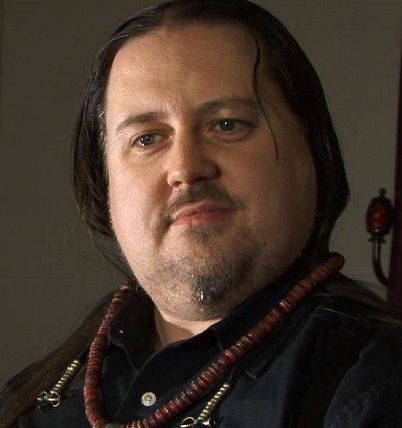

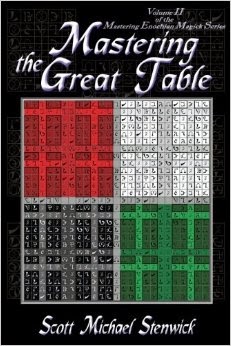

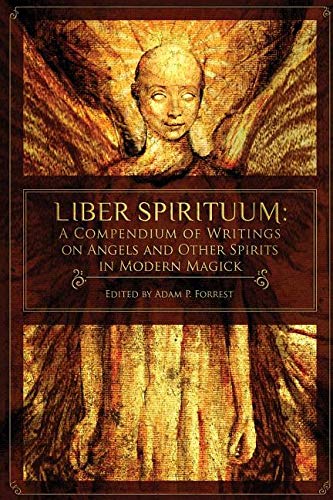
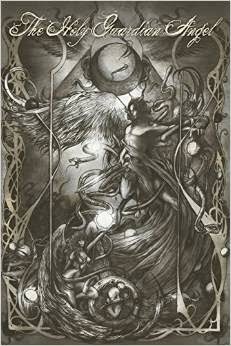

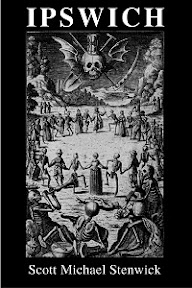
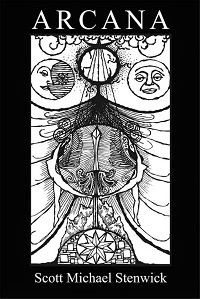

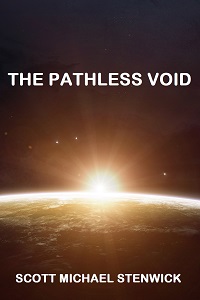

3 comments:
Let s get a example of hypothetical
situation that a person crossed the Abyss and stabilazed the consciousness of Binah or any Sephirot above Abyss!
Can he have a lot of above-average probability shifts ?
I guess he can give charges more easily ,reach entities more easily if he focuses the intent and concentrates!
I know when subject cross the Abyss
he becomes indifferent or unattached
when he Crosses the Abyss but maybe because that he got influence.
I don t know did Crowley died poor since he attained Kether grade but I wonder what he did to end up like that.Guess he did n t focus on mundane ways to do something.
When I practice GRIP do I make contact with my HGA more easily if used with conjuction with Liber Samekh ?
Having not done that myself, I really would have a hard time speculating. You do tend to get better at magick as you progress in mysticism. Magick is strongly related to your ability to shift your consciousness around, and the more mystical states you have experienced the more states of consciousness you have available.
I am of the opinion, though, that it is a misnomer to think each state of mystical development completely replaces the one that came before it. Mystical development is more like a series of concentric rings where each ring adds to what was before, giving access to a new state of consciousness along with the previous one, if that makes sense. So from the perspective of trans-abyss consciousness a person may be indifferent to mundane events, but all the mundane levels of his or her consciousness should be running at the same time and employed when appropriate.
Crowley didn't die poor because of his mystical accomplishments. Nothing about mystical progress inherently makes you poor. Crowley died poor because he burned through the vast majority of his personal fortune traveling the world and self-publishing all his books. One could maybe think of at least the publishing portion as a sort of "sacrifice" to assist those to come. At the same time, at the end of his life Crowley was relatively poor but not desperately so (as some have falsely claimed). He lived at a reasonably nice but not particularly upscale boarding house and he was able to cover his bills such as they were.
With Liber Samekh you do invoking pentagrams of the elements at each of the quarters prior to the words of power from the Stele of Jeu, so in a sense the GIRP is already built into it. You could do it prior to Liber Samekh if you want, but I would consider that redundant.
So mystical states are like dimensions:
It adds something new to already existing state.
Dimension for example on a line lenght(1 dimension) there s height (2 dimension) and the thickness (3).
So 4th got all these properties and adds something new!
Post a Comment